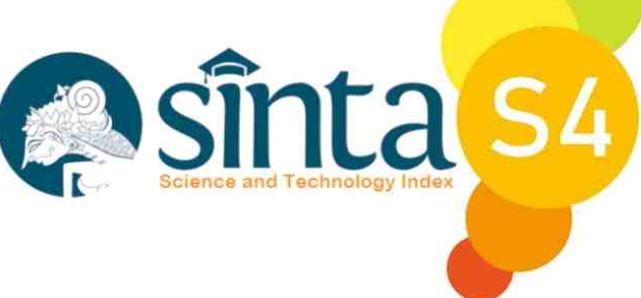ADAPTASI EMPLOYEE ENGAGEMENT SCALE (EES) DAN BUKTI RELIABILITAS & VALIDITAS
 ), Airin Triwahyuni(2),
), Airin Triwahyuni(2), (1) Padjadjaran University
(2) Padjadjaran University
 Corresponding Author
Corresponding Author
Copyright (c) 2023 Lusiana Effendi, Airin Triwahyuni
DOI : https://doi.org/10.24036/rapun.v14i2.116161
Full Text:
 Language : id
Language : id
Abstract
Keywords
References
Azwar, S. (2015). Penyusunan Skala Psikologi (2nd ed.). Yogyakarta : Pustaka Belajar.
Azwar, S. (2018). Metode Penelitian Psikologi (3rd ed.). Yogyakarta : Pustaka Belajar.
Biggs, A., Brough, P., & Barbour, J. P. (2014). Enhancing work-related attitudes and work engagement: A quasi-experimental study of the impact of an organizational intervention. International Journal of Stress Management, 21(1), 43–68. https://doi.org/10.1037/a0034508
Christian, M. S., Garza, A. S., & Slaughter, J. E. (2011). Work engagement: A quantitative review and test of its relations with task and contextual performance. Personnel Psychology, 64(1), 89–136. https://doi.org/10.1111/j.1744-6570.2010.01203.x
DiStefano, C., & Hess, B. (2005). Using confirmatory factor analysis for construct validation: An empirical review. Journal of Psychoeducational Assessment, 23(3), 225–241. https://doi.org/10.1177/073428290502300303
Hair, J. F., Tatham, R. L., Black, W. C., Anderson, R. E., & Babin, B. J. (2006). Multivariate Data Analysis. Pearson Prentice Hall.
Harter, J. K., Schmidt, F. L., & Hayes, T. L. (2002). Business-unit-level relationship between employee satisfaction, employee engagement, and business outcomes: A meta-analysis. Journal of Applied Psychology, 87(2), 268–279. https://doi.org/10.1037/0021-9010.87.2.268
Kahn, W. A. (2013). Psychological Conditions of Personal Engagement and Disengagement at Work. The Academy of Management Journal, 33(4), 692–724.
Lynn M. R. (1986). Determination and quantification of content validity. In Nursing Research (Vol. 35, Issue 6, pp. 382–386). http://ijoh.tums.ac.ir/index.php/ijoh/article/view/26
Macey, W. H., & Schneider, B. (2008). The Meaning of Employee Engagement. Industrial and Organizational Psychology, 1, 3–30.
Mulaik, S. A., James, L. R., Van Alstine, J., Bennett, N., & et al. (1989). Evaluation of goodness-of-fit indices for structural equation models. Psychological Bulletin, 105(3), 430–445. https://doi.org/10.1037//0033-2909.105.3.430
Rich, B. L., Lepine, J. A., & Crawford, E. R. (2010). Job engagement: Antecedents and effects on job performance. Academy of Management Journal, 53(3). https://doi.org/10.5465/amj.2010.51468988
Saks, A. M. (2006). Antecedents and consequences of employee engagement. https://doi.org/10.1108/02683940610690169
Saks, A. M., & Gruman, J. A. (2014). What Do We Really Know About Employee Engagement? Ce Development Quarterly, 25(2), 155–182. https://doi.org/10.1002/hrdq.21187
Salanova, M., González-romá, V., Bakker, A., & Schaufeli, W. B. (2002). The Measurement of Engagement and Burnout: A Two Sample Confirmatory Factor Analytic Approach. Journal of Happiness Studies 3, 71–92. https://doi.org/https://doi.org/10.1023/A:1015630930326
Sarti, D. (2014). Job Resources as Antecedents of Engagement at Work: Evidence From a Long-Term Care Setting. Human Resource Development Quarterly, 25(2), 213–237. https://doi.org/10.1002/hrdq.21189
Schaufeli, W. B., Bakker, A. B., & Salanova, M. (2006). The measurement of work engagement with a short questionnaire: A cross-national study. Educational and Psychological Measurement, 66(4), 701–716. https://doi.org/10.1177/0013164405282471
Shuck, B., Adelson, J. L., & Jr, T. G. R. (2016). The Employee Engagement Scale: Initial Evidence for Construct Validity and Implications for Theory and Practice. Human Resource Management. https://doi.org/10.1002/hrm.21811
Shuck, B., Osam, K., Zigarmi, D., & Nimon, K. (2017). Definitional and Conceptual Muddling : Identifying the Positionality of Employee Engagement and Defining the Construct. August. https://doi.org/10.1177/1534484317720622
Shuck, B., & Reio, T. G. (2014). Employee Engagement and Well-Being: A Moderation Model and Implications for Practice. Journal of Leadership and Organizational Studies, 21(1), 43–58. https://doi.org/10.1177/1548051813494240
Tripathi, D. J. P., & Sharma, M. S. (2016). The Key to Improve Performance:Employee Engagement. IOSR Journal of Business and Management, 18(10), 19–25. https://doi.org/10.9790/487x-1810041925
 Article Metrics
Article Metrics
 Abstract Views : 823 times
Abstract Views : 823 times
 PDF Downloaded : 176 times
PDF Downloaded : 176 times
Refbacks
- There are currently no refbacks.
Copyright (c) 2023 Lusiana Effendi, Airin Triwahyuni

This work is licensed under a Creative Commons Attribution-NonCommercial 4.0 International License.






